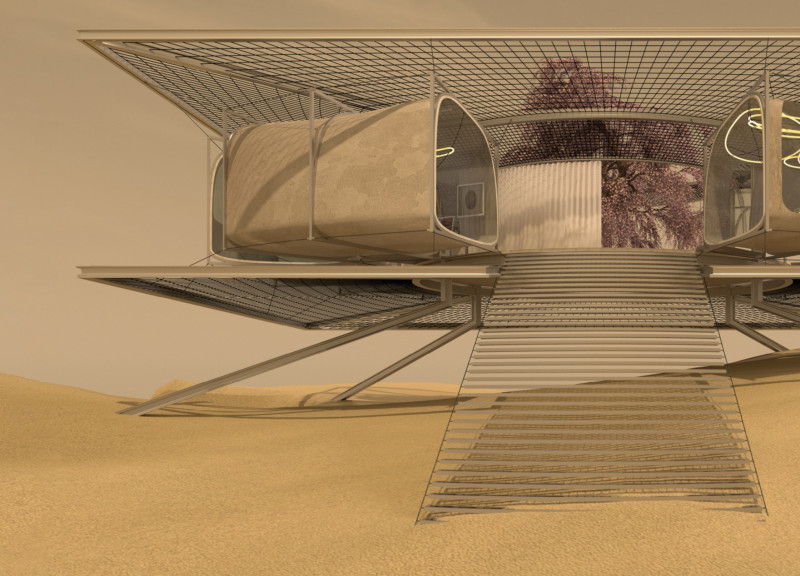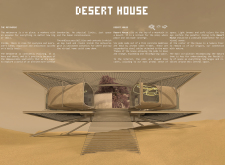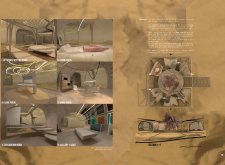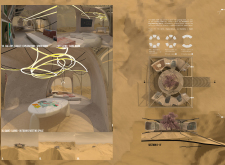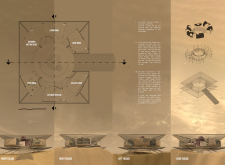5 key facts about this project
The Desert House is an architectural exploration set at the top of a mountain in a desert landscape. Functioning as a place for quiet reflection and creativity, it engages with the concept of space in the metaverse. The design focuses on flexibility, presenting a new way to think about how buildings interact with their environment.
Structural Organization
The building consists of six interconnected pods, each intended for different uses. These pods are held up by arched steel frames and suspended with cables, which allows them to shift and rearrange. This method of support creates a connection between the various spaces. Users can navigate the house to find areas that suit their needs at any given moment.
Interior Aesthetics
Inside the pods, the shapes recall natural caves, connecting to basic human feelings of safety. This design choice encourages a comforting environment that people can relate to. Soft colors and light browns contribute to a calm atmosphere, making it a suitable space for relaxation and thoughtful activities.
Central Element
A central Sakura tree is a key feature of the Desert House. It serves as a physical and symbolic anchor for the entire design. The tree reinforces the link between the natural world and digital experiences. It encourages visitors to pause and reflect, highlighting the project’s focus on balancing technology with nature.
Programmatic Layout
The arrangement of spaces within the house includes specific areas for different activities. The Outdoors Living/Meeting Space and Living Room act as social hubs for gatherings, while the Game Room provides a space focused on gaming culture. Moreover, the Exploration Room allows users to interact with digital marketplaces, and the Gallery/Vault safely displays and stores digital assets.
The design also includes a grid system, which helps with movement across the various spaces, enhancing accessibility and user experience.


